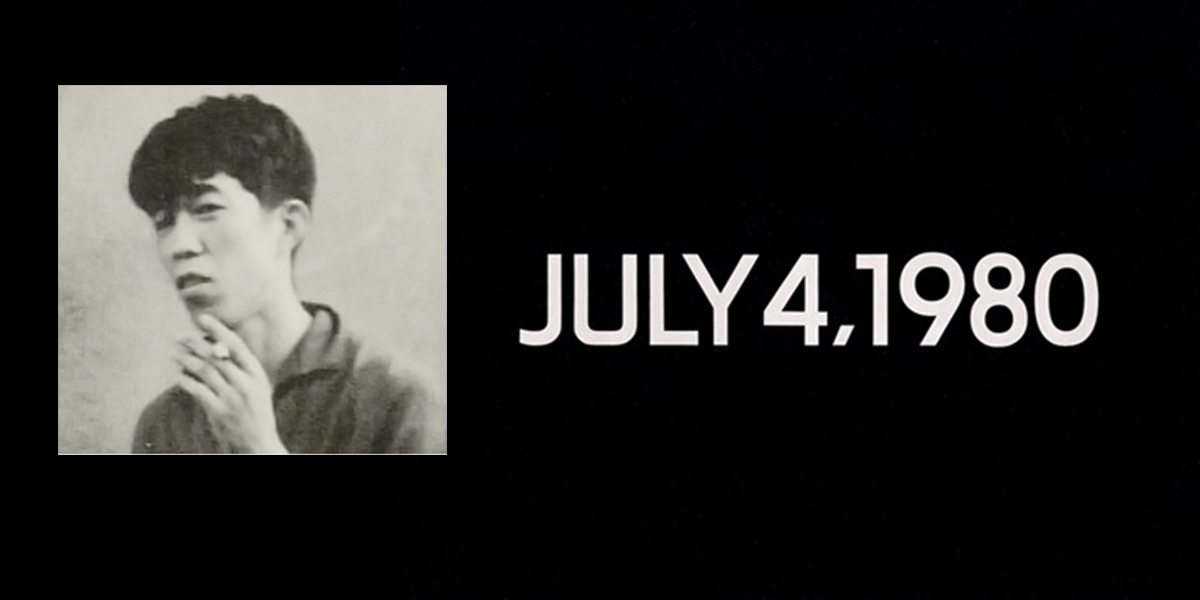“It is with great sadness that the David Zwirner gallery announces the passing of On Kawara”. For over five decades, On Kawara created paintings, drawings, books, and recordings that examine chronological time and its function as a measure of human existence. The artist began making his signature date paintings (known as the Today series) on January 4, 1966 in New York City, and continued to make them in different parts of the world. His practice is characterised by its meditative approach to concepts of time, space, and consciousness.
On Kawara was born (January 2, 1933 – July 10, 2014) he was one of Japan’s best known conceptual artists. On Kawara lived in New York City since 1965. He exhibited in many solo and group exhibitions, including the Venice Biennale in 1976. After graduating from Kariya High School in 1951, Kawara moved to Tokyo. Kawara went to Mexico in 1959 and travelled through Europe, then settled in 1965 in New York City, where he was an intermittent resident ever since.
Since January 4, 1966, he made a long series of “Date paintings” (the Today series), which consist entirely of the date on which the painting was executed in simple white lettering set against a solid background. The date was always documented in the language and grammatical conventions of the country in which the painting is executed (i.e., “26. ÁG. 1995,” from Reykjavik, Iceland, or “13 JUIN 2006,” from Monte Carlo); Esperanto is used when the first language of a given country does not use the Roman alphabet). The paintings, executed in Liquitex on canvas, conformed to one of eight standard sizes, ranging from 8×10 inches to 61×89 inches, all horizontal in orientation. The dates on the paintings, hand-painted with calculated precision, were always centered on the canvas and painted white, whereas the background colors vary; the paintings from the early years had bold colors, and the more recent ones were darker in tone. For example, Kawara briefly used red for several months in 1967 and then returned to darker hues until 1977. Four coats of paint were carefully applied for the ground and each allowed enough time to dry before being rubbed down in preparation for subsequent coats. Eschewing stencils in favor of hand-drawn characters, Kawara skillfully rendered the script, initially a sans-serif, elongated version of Gill Sans, later a quintessentially modernist Futura. Each work was carefully executed by hand. Some days he would make more than one. If Kawara was unable to complete the painting on the day it was started he immediately destroyed it. When a Date Painting was not exhibited, it was placed in a cardboard box custom-made for the painting, which was lined with a clipping from a local newspaper from the city in which the artist made the painting. Although the boxes were part of the work, they were rarely exhibited. Each year between 63 and 241 paintings were made.
Each Date Painting was registered in a journal and marked on a One Hundred Years Calendar. When Kawara finished a painting, he applied a swatch of the paint mixture he used to a small rectangle that was then glued onto a chart in the journal. Under each colour a number showing the painting’s sequence in that year and a letter indicating its size. The journal therefore records the details of the painting’s size, color and newspaper headline, while the calendar used colored dots to indicate the days in which a painting was made, and to record the number of days since the artist’s birth. Kawara created date paintings in more than 112 cities worldwide in a project that was planned to end only with his death.
Work by the artist is represented in major museum collections internationally, including the Centre Georges Pompidou, Paris; Hara Museum of Contemporary Art, Tokyo; Kunstmuseum Basel; The Metropolitan Museum of Art, New York; Moderna Museet, Stockholm; Museum of Contemporary Art, Tokyo; Museum Ludwig, Cologne; The Museum of Modern Art, New York; National Gallery of Art, Washington, D.C.; National Museum of Modern Art, Tokyo; Philadelphia Museum of Art; San Francisco Museum of Modern Art; Solomon R. Guggenheim Museum, New York; and the Toyota Municipal Museum of Art, Toyota City, Japan. A retrospective of Kawara’s work is currently being prepared by the Solomon R. Guggenheim Museum in New York, which will open in 2015.
Photos: © Courtesy Creative Commons Collage By Artlyst

